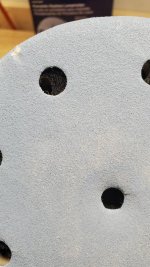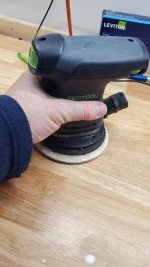ElliottDoostmard
Member
- Joined
- May 23, 2014
- Messages
- 3
Here's the deal...just bit the bullet and purchased my first festool and couldn't be happier, or so I thought. I'm using the 125 to finish sand walnut and maple. I Clean the wood and then I usually start with 100grit granat and am noticing immediately after the first pass I'm left with swirl marks. I then sand through to about 240 (granat) and still have them. I've read through everything here (I think) and tried all the suggestions of turning down the suction all the way, turning down the speed but just can't seem to figure out what is going on. I was hoping somebody might have some insight as to what I'm missing or doing incorrectly. Thanks for the help guys.


